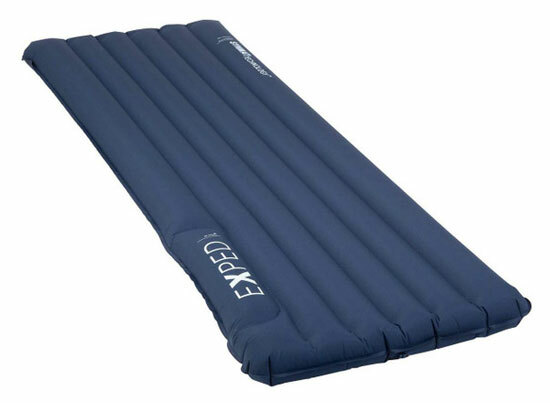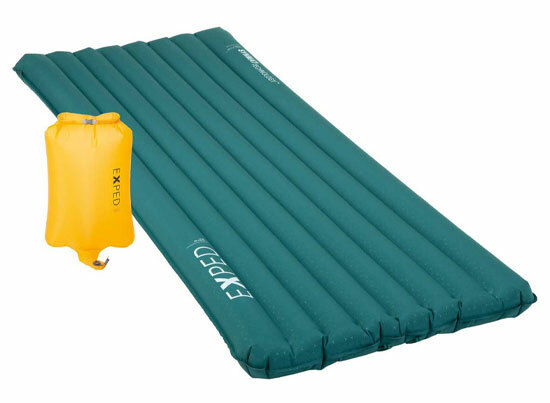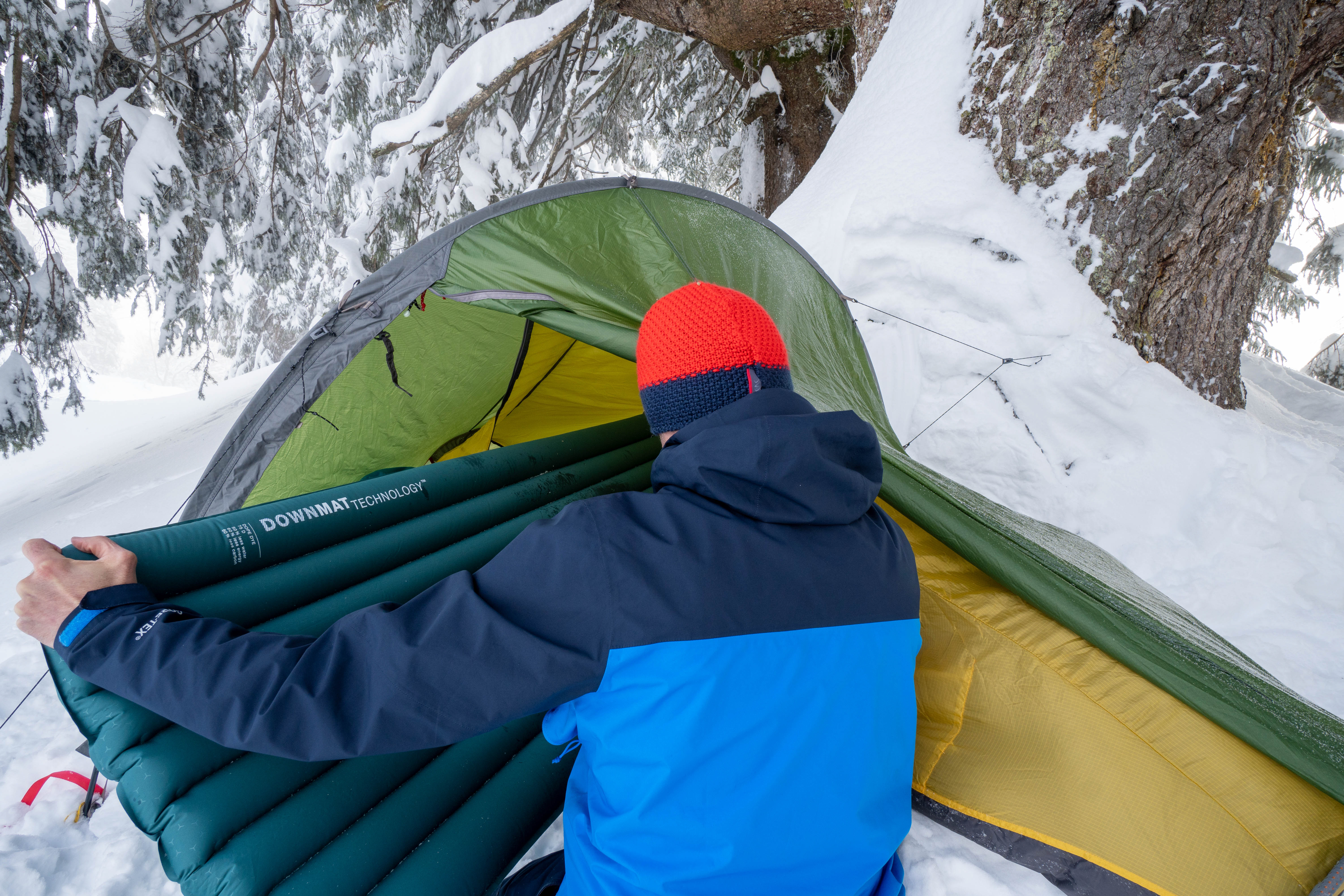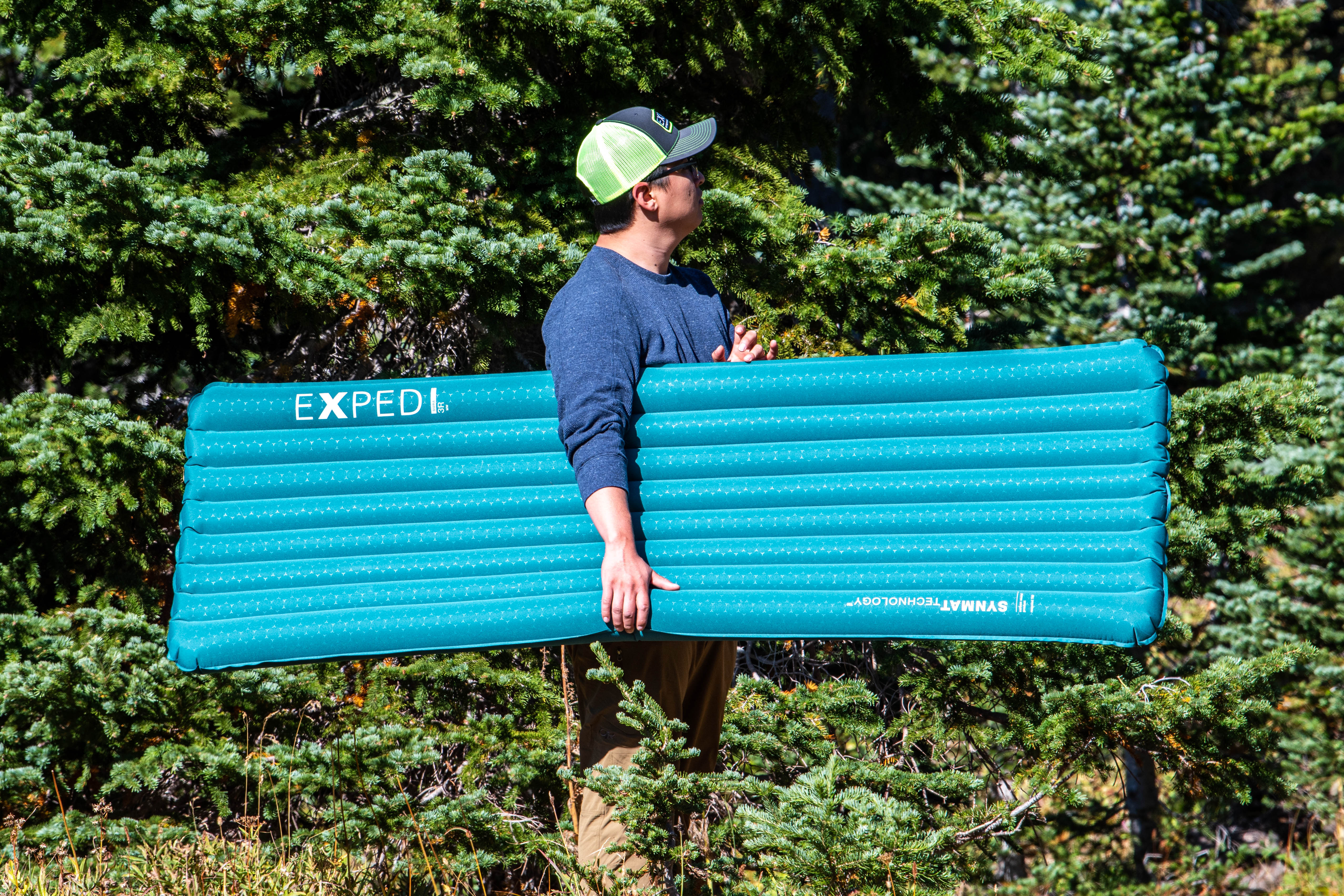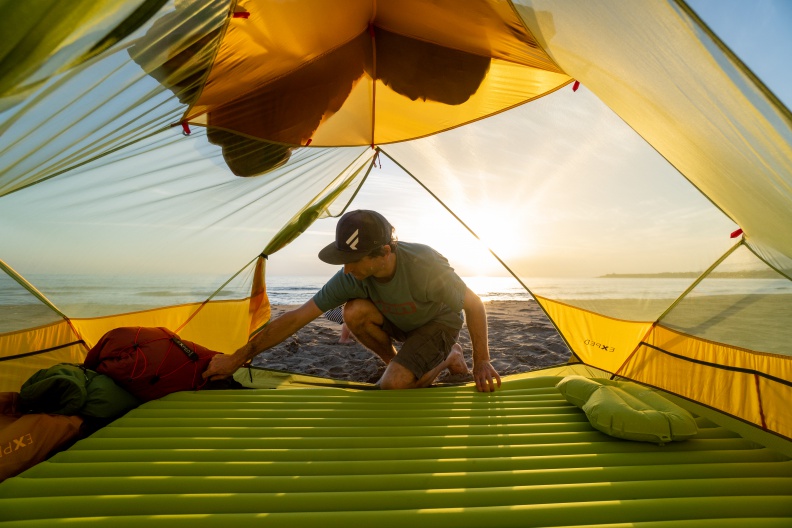Exped Sleeping Mats Explained
Posted by Mark Richardson on Feb 23, 2024
What's in a Name?
Exped have named their mats in a way that identifies the key features of the mat. Some examples are dissected below:
'Ultra' - This part of the name refers to a Series of mats.
The Ultra mats are the lightest series and are made using 20D recycled ripstop Polyester. The Dura mats are built to be durable (what else?) and use 75D Polyester on the top and 170D Polyester on the base, so they are much more puncture resistant than the Ultra mats. The Versa mats are constructed using 75D Polyester top and bottom, so they are much more of an all-rounder product.
'5R' - This part of the name refers to the R-Value or insulating ability of the mat.
1R is a mat with no insulation inside, just the air that was used to blow it up. It still has insulation value and Exped rate a 1R mat for Summer use.
3R mats are filled with 60g/m2 microfibre insulation and are rated for 3 season use by Exped. 5R mats are filled with 160g/m2 microfibre insulation and are rated for 4 season use by Exped.
6R mats may be filled with either Down or microfibre insulation and are rated for 4 season use by Exped. 7R and 8R mats in the Exped range are filled with 700 Fill Power down to provide the insulation and are rated for use in 'Extreme Cold' use. As the R-Value is a scientifically measured value, the 8R mats will provide more insulation than the 7R.
'MW' - This part of the name refers to the Size of the mat.
M means that the mat is a 'regular' size. Mat sizes are standardised across brands, and a regular mat is 183cm long by 52cm at its widest point. MW refers to a mat that is 13cm wider than the 'regular' size.
LW refers to a mat that is both 13cm wider and 14cm longer than the 'regular' size. Duo M is a mat sized for couples. Duo LW is a mat sized for couples that is wider and longer than the standard Duo M mat.
Mummy - This part of the name tells you the shape of the mat.
If omitted the mat is Rectangular, if it says 'Mummy' then the mat is tapered at the head and foot to save weight.
Choosing a mat
Step 1 - Decide on the insulation value you need.
Although Exped recommend their 1R mats for Summer use, from our experience a non insulated mat is often ok for 3 season use providing you have a warm sleeping bag. So 1Rs or 3Rs are all suitable for most environments for 3 seasons. If you need a 4 season mat you need to look at 5R and upwards.
Step 2 - What size and shape mat do you need?
Mummy shaped mats that offer the same insulation and comfort as a rectagular mat will be lighter, because they are tapered but not everyone likes them because your legs can stray off the mat during the night and come into contact with the cold ground. Similarly some people find it difficult to stay on a narrower mat, rolling off completely. In this case a wider mat may be the best choice. And finally the regular mats are 6ft long, if you are taller then this then you either buy a longer mat or sleep with you feet protruding from the bottom.
Step 3 - How important is weight and packed size?
If you are backpacking then weight and packed size is probably a key consideration when buying your mat, the weight of a Dura mat is about 50% more than an Ultra mat with the same spec. The Dura mat will offer higher puncture resistance, but with care both mats will last for years.
Shop Exped mats
What's in a Name? Exped have named their mats in a way that identifies the key features of the mat. Some examples are dissected here. — The Ultra mats are the lightest series and are made using 20D recycled ripstop Polyester. The Dura mats are built to be durable (what else?) and use 75D Polyester on the top and 170D Polyester on the base, so they are much more puncture resistant than the Ultra mats. The Versa mats are constructed using 75D Polyester top and bottom, so they are much more of an all-rounder product.


